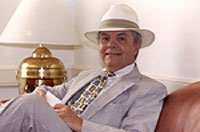There was no yearbook for this class, and the Reserve Record was still two years away from
starting, but the Class of 1923 left a nice legacy of success to the school. There were 23 graduates in the Class of 1923. Mr Homer O. Sluss was Head of School, and Harlan N. Wood of the Class of 1888, was Associate Head. There were just ten faculty members, which included a Congregational minister who taught English Bible and a teacher who was in charge of the Agriculture program which sent students to work at the 400-acre Evamere Farm. Marian Bingham was Librarian for the “splendidly equipped library” on the ground floor of the Chapel that was planned to hold 8,000 volumes. Most of the students in the Class of 1923 and the other early classes were from Hudson or elsewhere in Ohio, although one of the former members of this class was Ada K. Yang of Senju, Korea, whose parents lived in Hawaii. One of the young women from 1923 was Helen Spreng who had come from Lebanon in southern Ohio. She went on to Simmons College in Boston where she earned a B.S., returned to Hudson to marry Homer Benhoff of the Class of 1924, then worked as Librarian at Glenville High and John Marshall High, both in Cleveland. She then earned a master’s from Columbia by attending several summers of classes. She then worked for the Cleveland Public Library until the 1950’s. A son, Edward Benhoff, is a graduate from 1953, thirty years after his parents.
David Rockwell Hinman, Class of 1923, was the nephew of the well-regarded Judge David Ladd Rockwell, who had graduated from WRA some years before. The Judge sponsored his nephew’s attendance at the school and also paid for his trip to Europe with faculty member James C. Sloane, who taught French and Spanish. David Hinman then attended both The Ohio State University and Kent State University. He married Lois Billiter of the Class of 1924 who also earned her degree at Kent State and taught in the Akron and Streetsboro schools. The Hinmans were parents of two daughters and lived in Peninsula for many years.

Harriet Bell Lowman was a member of a distinguished Hudson family that had strong ties to WRA. She went to Wheaton College in Massachusetts, finished her degree at Lake Erie College, then earned a library degree at Western Reserve University. She later married Newell Hamilton, and died at age 60 in 1965. Her sister, Eleanor, and brother John, were also students at WRA. Their father, John S. Lowman, was Vice-President of one of the Akron rubber companies.
Finally, there is August G. Peterka, winner of the Robinson Prize in 1923, who earned his degree at Kent State where he was President of his junior class and Captain of the KSU football team. He then went on to Columbia University in New York where he earned a master’s in physical education. He taught and coached in Minerva and Dover before becoming Head basketball coach at Kent State. Starting in 1935 he worked as Head of Recreational activities for the WPA, directing them in 20 counties of central Ohio from an office in Columbus. He contracted “rabbit fever” in 1940, and because of numerous blood transfusions, was forced to resign this position. He and his wife later moved to Euclid where he ended his professional career as a labor expert at Parker Hannifin. There may not have been any unusually successful alumni from the group that graduated a century ago, but they charted a direction for the students who came later.































